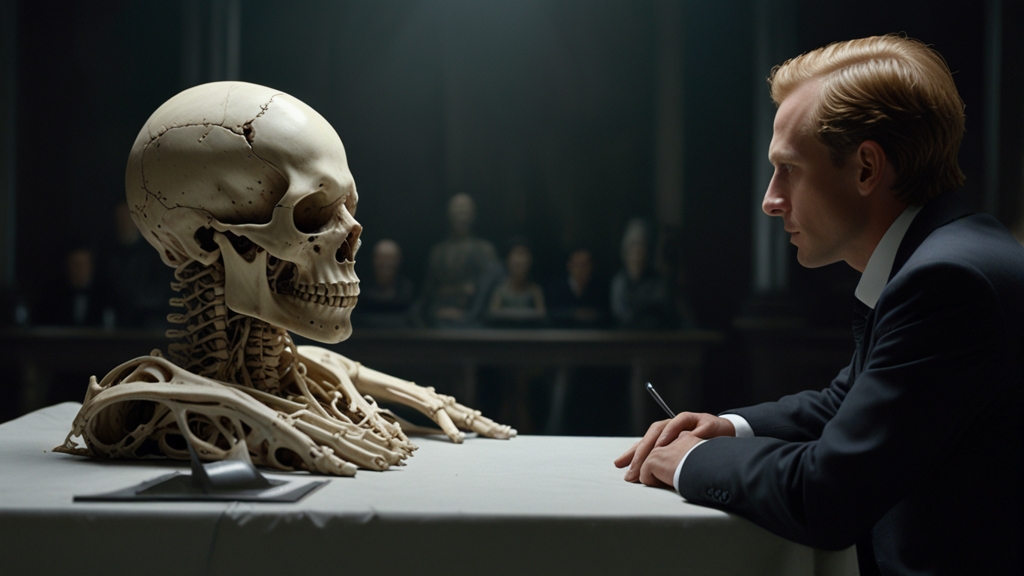Moses Unveiled: The Man Behind the Myths
The name Moses is almost synonymous with leadership, deliverance, and divine mandate. His storied life, as depicted in the Torah, the Bible, and the Quran, has been a cornerstone for centuries of religious teachings, cultural references, and scholarly debates. However, the figure of Moses is enveloped in myths, miracles, and legends, begging the question: Who was Moses, really? This article aims to unveil the man behind the myths, blending historical inquiry with theological reflection.
The Historical Moses
When historians set out to separate the historical Moses from the layers of myth, they often face a labyrinthine challenge. Academic consensus suggests Moses lived during the Late Bronze Age, around the 13th century BCE. Yet, concrete archaeological evidence directly confirming his existence remains elusive.
“It is not the things we know that cause problems, but the things we think we know that ain't so.” — Mark Twain
The absence of clear evidence does not entirely negate his existence. Ancient Egypt's records during the purported time of Moses are sparse, often meticulously curated to erase the pharaoh's defeats and embarrassments. The events of the Exodus, described in the Hebrew Bible, detail plagues, a mass departure from Egypt, and the parting of the Red Sea—events that would have left an indelible scar on Egyptian history. Yet, given the historical context, it is plausible that the Egyptians would not have documented such humiliations.
Theological and Cultural Impact
The importance of Moses is undeniable in Judaism, Christianity, and Islam. For Jews, Moses is Moshe Rabbenu (“Moses our Teacher”), the quintessential prophet who led the Israelites out of slavery in Egypt and received the Torah at Mount Sinai. His credibility as a prophet and leader is etched into the Jewish consciousness through Passover celebrations and the observance of the Torah.
“Moses is the first liberator, whose mission was to show man the path to his divine heritage.” — Abraham Joshua Heschel
In Christianity, Moses is seen as a prefiguration of Jesus Christ. The deliverance he provided for Israel prefigures the spiritual salvation offered by Christ. The Ten Commandments received by Moses on Mount Sinai are also a moral foundation echoed in Christian ethics and Western legal systems.
In Islam, Moses (or Musa) is a revered prophet second only to Muhammad. The Quran chronicles his life extensively, emphasizing his role as a guide and lawgiver. Thus, no matter the religious lens through which one views Moses, his influence permeates foundational aspects of faith, morality, and law.
The Human Side of Moses
What tends to get lost in the grandeur of myth and religion is Moses' humanity. The sacred texts hint at a man who struggled with his identity, mission, and the burdens of leadership. Born a Hebrew but raised in Egyptian royalty, Moses' life is a narrative of internal conflict and identity crises. He doubted his capabilities when called by God at the burning bush, famously questioning, “Who am I that I should go to Pharaoh and bring the Israelites out of Egypt?”
Moses' journey was not free of mistakes. He killed an Egyptian in a fit of anger, had frequent doubts, and even disobeyed God at Meribah, leading to his prohibition from entering the Promised Land. These human flaws render Moses relatable, providing valuable lessons in perseverance, humility, and faith.
Conclusion
The myths surrounding Moses are rich and enduring, shaping his legacy as a divinely chosen leader, lawgiver, and prophet. Yet, peeling back these layers reveals a man of deep complexity, faith, and fallibility. Understanding Moses as both a historical and mythical figure allows us to appreciate the full spectrum of his impact. Whether through the lens of faith, history, or literature, Moses remains an indelible figure whose life continues to inspire and challenge humanity.








